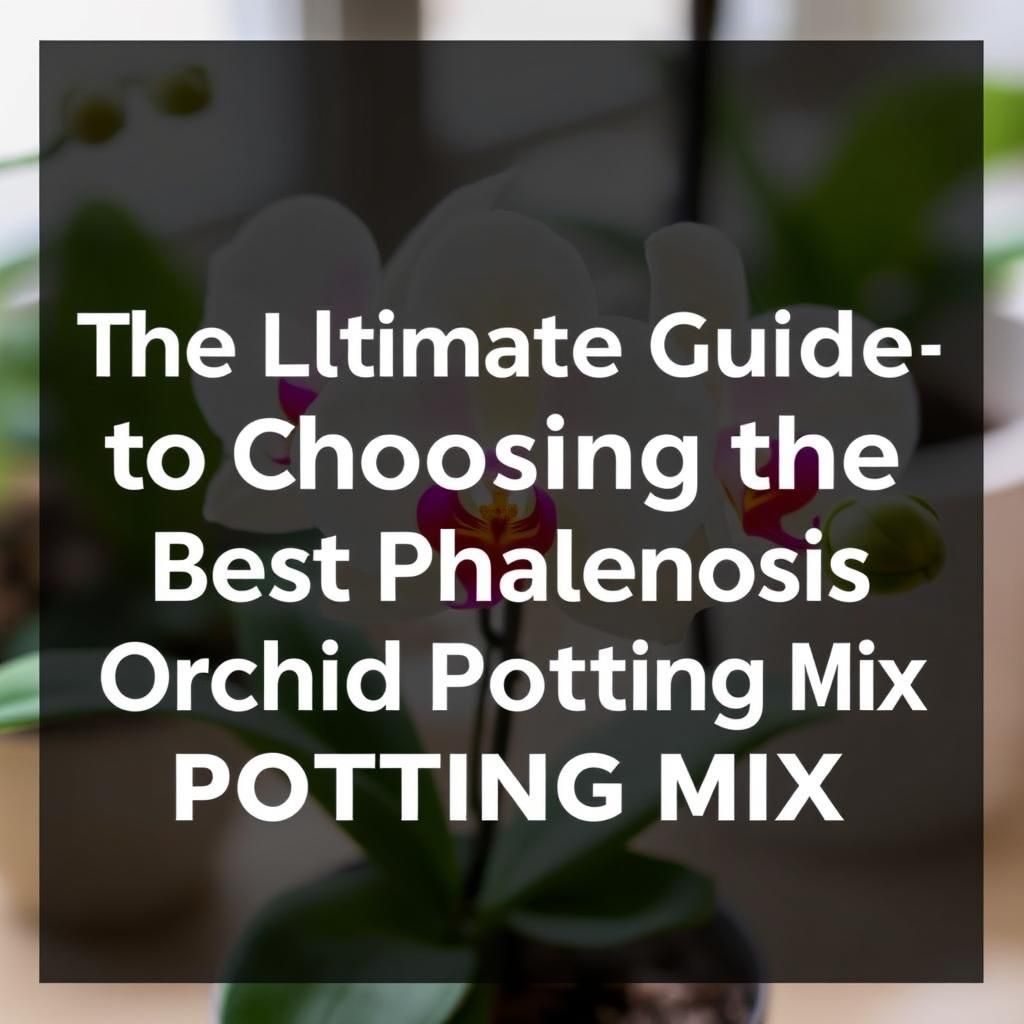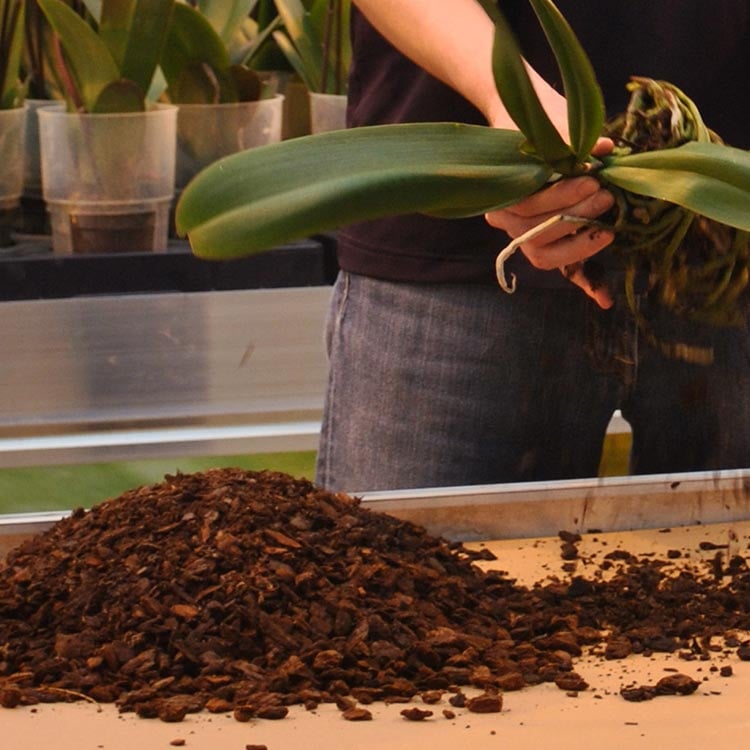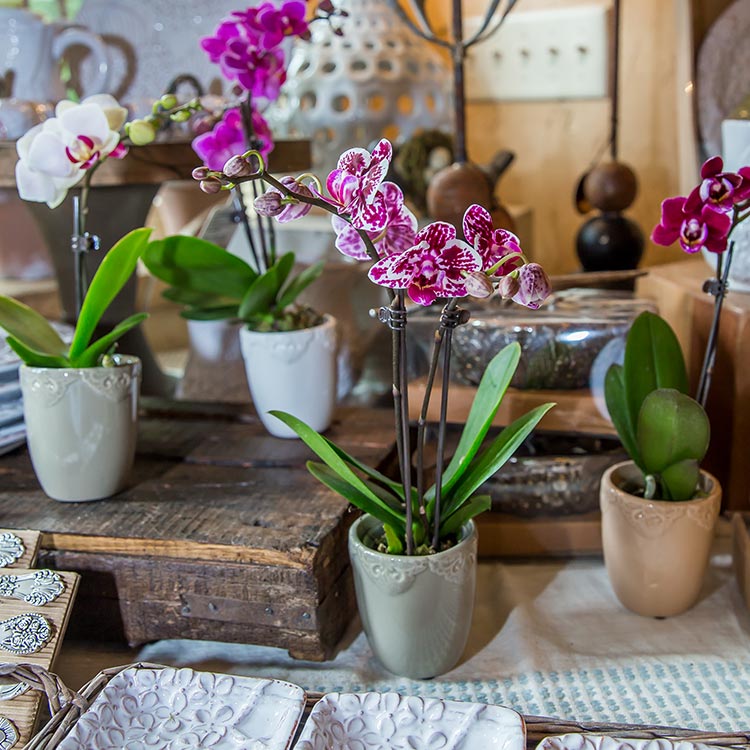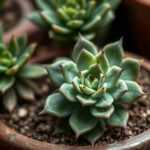The Ultimate Guide to Choosing the Best Phalaenopsis Orchid Potting Mix

When it comes to cultivating beautiful Phalaenopsis orchids, selecting the right potting mix is crucial for their success and longevity. These stunning orchids, known for their vibrant blooms and varied colors, thrive in specific conditions that mimic their natural habitat. The ideal potting mix not only provides adequate drainage and aeration but also retains sufficient moisture to meet the needs of these delicate plants. In this ultimate guide, we will explore the various types of potting mixes available, their ingredients, and how to choose the best one tailored to your Phalaenopsis orchids' unique requirements for optimal growth and blooming.
Understanding Phalaenopsis Orchid Potting Mix
The Phalaenopsis orchid, commonly known as the moth orchid, thrives in a well-aerated and well-draining potting mix that mimics its natural habitat. This type of orchid prefers a blend that can provide sufficient aeration and moisture retention while preventing stagnant water at the roots. A typical potting mix for Phalaenopsis orchids often includes ingredients such as bark, charcoal, and perlite, which work together to create an environment that supports healthy root growth and prevents rot. It’s essential to select a mix that caters to the unique needs of these orchids to ensure they flourish in a home or greenhouse setting.
Essential Components of Phalaenopsis Orchid Potting Mix
The primary components of a suitable potting mix for Phalaenopsis orchids include fir bark, coconut coir, and perlite. Fir bark provides excellent drainage and aeration, while coconut coir helps retain moisture without becoming waterlogged. The addition of perlite enhances air circulation within the mix, ensuring that the roots remain healthy and free from fungal infections. Using a combination of these elements creates an optimal growing environment that mimics the natural conditions found in tropical environments, where these orchids are commonly found.
Why Proper Drainage Is Crucial
Proper drainage is vital for Phalaenopsis orchids as their roots are particularly sensitive to excess moisture. When the potting mix retains too much water, it can lead to root rot, which is one of the most common issues faced by orchid growers. A well-draining mix allows water to flow through quickly while still holding enough moisture to hydrate the roots. This balance is crucial for maintaining the health of the plant and promoting robust growth and blooming.
How to Prepare Your Potting Mix
Preparing a potting mix for Phalaenopsis orchids involves combining the right proportions of each ingredient to ensure optimal growth conditions. A common recipe includes mixing 50% fir bark, 30% coconut coir, and 20% perlite. This blend not only provides the necessary drainage but also retains adequate moisture levels for the roots. Before potting, it's good practice to soak the coconut coir to ensure it is fully hydrated, and to sterilize the bark to eliminate any pests or pathogens that may harm your orchid.
Signs of Poor Potting Mix Quality
An inadequate potting mix can lead to several health issues for Phalaenopsis orchids. Signs that the mix may not be suitable include yellowing leaves, stunted growth, and mushy roots. If the potting medium becomes compacted or retains too much water, it can suffocate the roots and lead to disease. Observing these symptoms early on allows growers to reassess their potting mix and make adjustments as needed to improve conditions for their orchids.
Best Practices for Repotting Phalaenopsis Orchids
Repotting Phalaenopsis orchids is an essential practice to ensure their health and longevity. It’s recommended to repot every 1-2 years, using fresh potting mix to replace the degraded medium. The best time to repot is shortly after blooming when the plant is in a phase of active growth. When repotting, careful removal of the old mix and inspection of the roots for signs of rot or disease is crucial. After preparing the new potting mix, gently place the orchid in its container and fill it with the new medium, ensuring the roots are well-cared for while allowing for proper drainage.
| Ingredient | Purpose |
|---|---|
| Fir Bark | Provides drainage and aeration |
| Coconut Coir | Retains moisture |
| Perlite | Enhances aeration |
What is the best potting mix for phalaenopsis orchids?

The best potting mix for Phalaenopsis orchids generally consists of a combination of materials that promote excellent drainage while providing the necessary air circulation to the roots. Phalaenopsis orchids, also known as moth orchids, thrive in a medium that mimics their natural habitat, allowing moisture retention without becoming waterlogged. An ideal potting mix for these orchids may include bark, sphagnum moss, perlite, and charcoal.
Key Components of Potting Mix
The right potting mix for Phalaenopsis orchids is composed of various components to create a well-balanced environment. Each component plays a critical role in supporting the plant's health.
- Bark: Often the primary ingredient, shredded pine or fir bark provides excellent drainage and aeration.
- Sphagnum Moss: This material retains moisture while allowing excess water to drain, keeping the roots hydrated but not soggy.
- Perlite: Added for increased aeration and drainage, perlite helps prevent compaction of the mix.
Mix Ratios for Optimal Growth
When preparing the potting mix, the ratio of components can significantly affect the growth of Phalaenopsis orchids. Ensuring the right balance is key.
- A typical mix ratio might include 50% bark, 30% sphagnum moss, and 20% perlite.
- Adjusting these ratios can be beneficial depending on your local climate; for humid environments, increase perlite to encourage faster drying.
- In drier climates, slightly more sphagnum moss may be mixed in to retain moisture longer.
Store-Bought vs. Homemade Mixes
There are options for acquiring potting mixes, whether through commercial products or homemade recipes. Each has its pros and cons.
- Store-bought mixes specifically labeled for orchids usually contain the right components, but may not always meet specific needs.
- Creating a homemade mix allows for customization tailored to your specific environment, but requires knowledge of the materials.
- Consider factors such as availability of ingredients and ease of preparation when choosing between these options.
Maintenance of Potting Mix
Over time, potting mixes can break down and lose their effectiveness. Regular maintenance is crucial for the health of Phalaenopsis orchids.
See also:
- Inspect the mix regularly and replace any bark that has broken down into dust.
- Every couple of years, it may be necessary to repot the orchid entirely into fresh mix to ensure healthy growth.
- Monitor moisture levels closely; if the mix remains too wet or dry, adjustments should be made to the components used.
Signs of Poor Potting Mix
Recognizing the symptoms of improperly chosen potting mix can prevent significant damage to Phalaenopsis orchids. Several signs indicate that intervention is needed.
- Yellowing leaves: Too much moisture can cause root rot, leading to yellowing leaves.
- Stunted growth may indicate that the plant is not receiving adequate nutrients or air circulation due to a compacted mix.
- Constantly wet or dry conditions point to an imbalance in the mix, requiring a reevaluation of the components used.
What kind of soil do phalaenopsis orchids like?

Phalaenopsis orchids, also known as moth orchids, thrive in specific soil conditions that mimic their natural habitat. In the wild, these orchids grow on trees and in rock crevices, which means they are accustomed to a growing medium that provides excellent drainage and aeration. Here’s a detailed look at the kind of soil that is ideal for phalaenopsis orchids.
Components of Orchid Mix
The ideal soil for phalaenopsis orchids is often not soil at all, but rather a special orchid mix. This mix usually contains various components that create an environment conducive to the health of the plant. Some common components are:
- Bark Fines - Provides structure and drainage.
- Sphagnum Moss - Helps retain moisture while allowing air circulation.
- Perlite or Pumice - Improves drainage and aeration.
Importance of Drainage
Drainage is vital for the health of phalaenopsis orchids. They are especially sensitive to overwatering, which can lead to root rot. A suitable soil mix allows excess water to flow out quickly. The factors that contribute to good drainage include:
- Coarse Texture - Larger particles create air gaps, improving drainage.
- Minimal Soil Content - Avoiding traditional potting soil prevents water retention.
- Using Pots with Drainage Holes - Ensures that water does not accumulate at the bottom.
Moisture Retention
While phalaenopsis orchids require good drainage, they also need a medium that can retain some moisture. This balance is crucial, as it allows the roots to absorb nutrients and remain hydrated. Key factors for moisture retention include:
- Moss Addition - Enhances the retention of moisture without overly saturating.
- Watering Frequency - Adjusting how often you water based on the mix used.
- Humidity Levels - Maintaining humidity can reduce the need for frequent watering.
pH Levels and Nutrient Availability
The pH level of the growing medium can significantly impact the availability of nutrients. For phalaenopsis orchids, the ideal pH is often between 5.5 and 6.5. This level can be influenced by:
- Replenishing Nutrients - Regularly using orchid fertilizers that match this range.
- Testing Soil pH - Using pH test kits to monitor and adjust as necessary.
- Avoiding Chemical Buildup - Flushing the mix periodically to remove excess salts.
Commercial vs. Homemade Orchid Media
Orchid enthusiasts can choose between commercial orchid mixes or create their own blends. Each option has pros and cons that should be considered:
- Commercial Mixes - Convenient and formulated for optimal growth, but may contain added chemicals.
- Homemade Mixes - Customizable based on specific plant needs, but may require more experimentation.
- Cost-Effectiveness - Making your own mix can be cheaper in the long run, especially for multiple plants.
What soil to use for repotting orchids phalaenopsis?

To successfully repot Phalaenopsis orchids, it is crucial to select the right type of soil. These orchids have specific needs that differ from traditional houseplants, requiring a specialized planting medium to thrive. Generally, Phalaenopsis orchids prefer an orchid mix that provides excellent aeration, drainage, and moisture retention. The ideal soil for these orchids is often a combination of various materials that mimic their natural growing conditions.
Key Components of Orchid Mix
The ideal soil for Phalaenopsis orchids should contain several key components to ensure the best growth environment.
- Bark - Pine bark is commonly used, providing the necessary structure and airflow.
- Perlite - This helps in drainage and prevents compaction of the mix.
- Sphagnum moss - Retains moisture while providing a bit of aeration and insulation.
Store-Bought Orchid Soil vs. Homemade Mix
When choosing the soil, you can decide between buying pre-mixed orchid soil or creating your mix.
- Store-bought mixes - These are convenient and often specifically designed for orchids, ensuring proper drainage and aeration.
- Homemade mixes - Offers customization according to your orchid's needs, and often includes bark, perlite, and sphagnum moss in varying ratios.
- Cost considerations - Homemade mixes can be more economical, especially if you have access to the ingredients.
Signs Your Orchid Needs Repotting
Recognizing when to repot your Phalaenopsis orchid is crucial for its health and growth.
See also:
- Roots are overcrowded - When roots start coming out of the pot or growing in a circular manner.
- Soil degrades - If the mix is breaking down or retains excess moisture, leading to root rot.
- General decline in health - If your orchid becomes less vibrant or shows signs of stress.
Repotting Procedure for Phalaenopsis Orchids
The repotting process is essential in ensuring that your orchid transitions well to fresh soil.
- Preparation of materials - Gather a clean pot, fresh orchid mix, and tools like scissors and a plant stake.
- Removing the orchid - Gently take the orchid out of its pot, being careful not to damage the roots.
- Trimming and cleaning - Trim away any dead or damaged roots and clean any remaining soil from the healthy roots.
Maintenance After Repotting
After repotting, your Phalaenopsis orchid needs special attention to adjust to its new environment.
- Watering schedule - Adjust your watering routine, allowing the new mix to settle but not drying out completely.
- Humidity control - Maintain a high humidity level around the orchid, as they prefer a humid environment.
- Monitoring for stress - Observe your orchid closely for signs of stress, adjusting care as needed.
What pots are best for phalaenopsis orchids?

To achieve optimal growth and health for Phalaenopsis orchids, selecting the right pots is essential. Here are some of the best options to consider:
Choosing the Right Material
The material of the pot plays a significant role in the health of Phalaenopsis orchids. The most common materials include plastic, clay, and ceramic.
- Plastic: Lightweight and retains moisture well, which is beneficial for orchids that prefer slightly moist conditions.
- Clay: Provides excellent aeration but can dry out quickly, requiring more frequent watering.
- Ceramic: Often aesthetically pleasing and can be used with drainage holes; however, they can retain too much moisture if not properly managed.
Drainage Considerations
Proper drainage is critical for the health of Phalaenopsis orchids. Without adequate drainage, the roots can become waterlogged, leading to rot.
- Pre-drilled holes: Always choose pots that have multiple holes at the bottom for easy drainage.
- Mesh netting: Consider using mesh to cover drainage holes to prevent substrate from leaking out while allowing water to escape.
- Raised feet or stands: Some pots come with raised bases that keep the pot off the ground, improving airflow and preventing root rot.
Pot Size Matters
The size of the pot is another important factor to consider when growing Phalaenopsis orchids.
- Correct size: Choose a pot that is just slightly larger than the root ball of the orchid to avoid excess moisture retention.
- Growth room: Ensure that the pot allows for some growth; ideally, there should be about 1-2 inches of space around the roots.
- Repotting frequency: Regularly check if the orchid needs repotting, usually every 1-2 years, when it outgrows its current pot.
Ventilation and Airflow
Phalaenopsis orchids thrive on proper ventilation. The pot design should promote airflow around the roots.
- Slotted pots: Consider pots with side holes or slots; these provide better aeration compared to solid pots.
- Container types: Look for hanging baskets or pot types specifically designed for orchids that allow air to circulate.
- Root exposure: Some orchid enthusiasts prefer pots that provide visibility for the roots, allowing the grower to monitor their health and moisture levels.
Use of Orchid Mix
Using the right substrate or orchid mix is equally important as the pot itself.
- Specialty potting mix: Use a mix specifically designed for orchids, often containing bark, sphagnum moss, and other moisture-retaining materials.
- Good drainage flow: Ensure that the mix allows for water to drain effectively while retaining enough moisture for the roots.
- Fertility considerations: Regularly monitor the nutrient levels in the potting mix, as orchids often benefit from additional fertilizer during the growing season.
Questions from Our Readers
What is the best potting mix for Phalaenopsis orchids?
The best potting mix for Phalaenopsis orchids typically includes a blend of bark, charcoal, and sphagnum moss. This combination provides excellent drainage and aeration, which are crucial for the health of these epiphytic plants. Using a commercial orchid mix specifically designed for orchids is also a great option.
How often should I repot my Phalaenopsis orchid?
Phalaenopsis orchids should generally be repotted every 1 to 2 years or when the potting mix breaks down and loses its aeration properties. Signs that your orchid needs repotting include root crowding or an unhealthy look to the potting mix. Repotting helps ensure that the roots have enough space to grow and receive proper nutrients.
Can I use regular potting soil for my Phalaenopsis orchid?
No, you should not use regular potting soil for your Phalaenopsis orchid. Traditional potting soil retains too much moisture, which can lead to root rot. Instead, use an orchid-specific potting mix that allows for better drainage and replicates the orchid's natural growing environment.
How do I maintain the potting mix for my Phalaenopsis orchid?
To maintain the potting mix for your Phalaenopsis orchid, ensure you are watering appropriately and allow the mix to dry out between waterings. Additionally, consider refreshing the mix every couple of years to maintain its effectiveness by removing any decayed materials and adding fresh mix. This practice promotes strong root growth and overall plant vitality.
See also:

If you want to read more articles like The Ultimate Guide to Choosing the Best Phalaenopsis Orchid Potting Mix, we recommend you check out our Pots category.
Leave a Reply
Related Articles